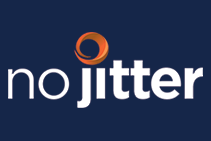The year was 2005.
I was much younger, with two young kids and no gray hair. The iPhone didn’t exist yet. Cloud communications as we know it was still in its infancy.
I was knee-deep in a consulting project that had me interviewing users about their phone complaints for two weeks straight. Most of the conversations were incredibly mundane and downright boring. But in the midst of users complaining about not having a voicemail light or a speakerphone, I struck consulting gold.
One of the employees I met with was responsible for assembling after-hours crews to repair outages. I asked her about this process, and it involved paging potential technicians and waiting up to 15 minutes for a response before moving on to the next one. I asked her how long it takes to assemble a crew, and she answered, “It can take up to two hours.”
Two hours? Are you kidding me? I kept my opinion to myself, maintained my professionalism and made sure to triple-star and circle this fact in my notes.
As I dug deeper into the root cause of this problem, I realized that it sprung from a combination of outdated technology and processes complicated by union restrictions. The crew-assembly issue would be tough to sort out, but it was too important of an issue to the organization not to figure it out.
Automating this manual and broken process was the key to solving this problem.
The drawback to this solution was I had no idea how to do this or even if the technology existed. We needed a system that could take input on how many crew members were required, along with the location of the outage, and then automatically contact potential technicians to see who was available to respond, in this case, via a phone call. Ideally, this would be a cloud-based system with APIs to automate the process from start to finish.
I think you see where this is going – this is a job for Communications Platform as a Service! The only problem is it was 2005, and CPaaS didn’t exist yet. It would be two years before Twilio was founded and several more before CPaaS matured into an enterprise-class service category. So how did we solve this problem eighteen years ago? While CPaaS didn’t exist yet, emergency notification systems were booming following lessons learned from 9/11. I realized that we could engineer a cloud-based emergency notification system to call out to technicians, play a recorded message about what was needed, and ask them to press one if they could respond or two if they couldn’t. The system would stop calling when it reached the required number for the outage.
This simple and relatively inexpensive cloud-based workflow took that two-hour process and turned it into a two-minute process, helping to improve outage resolution times dramatically. It was one of my favorite projects, as the solution was easy to deploy and made a huge impact.
Since then, I have been very interested in integrating cloud-based communications applications to automate broken communications processes, which is why I’ve always been a fan of CPaaS. There are a lot of technologies in the stack that might promise strategic value, but do they really deliver? Do they provide experiences that customers and employees actually want? . From a customer experience perspective, surveys reflect that despite all of the money we’ve thrown into technology, customer service has gotten worse. Moving to the cloud and implementing AI are great, but not if the customer experience doesn’t change. A lot of the attention, and money, is being spent on improving reactive communications, but customers prefer proactive communications over a multitude of apps and devices, which is where CPaaS can fill the gaps.
Over the last 15 years, we’ve seen CPaaS take a center role in services we use every day. CPaaS powers communications between drivers and passengers for apps like Uber and Lyft, in a way that neither party’s phone number are shared. We all receive text messages daily, notifying us of appointments, deliveries, bills due, and a myriad of reminders all providing information we’ve requested and all powered by CPaaS. Without even knowing it, CPaaS has become a key enabler for communications we rely on.
Fast forward to 2023, where I just attended the first-ever CPaaS Acceleration Summit, held in Amsterdam. The event gathered stakeholders from across the CPaaS ecosystem, including CPaaS/UCaaS/CCaaS providers, telcos, integrators, consultants, analysts, and more. The purpose was to converge as an industry to build relationships within the CPaaS community and to increase momentum as the industry seeks to grow CPaaS into a $100 billion segment by 2030. Building that kind of momentum will require new partnerships, expanded service delivery models, better marketing, and a more extensive specialized workforce. This is an ambitious goal and will require a global effort, with a dramatic increase in collaboration from players worldwide.
While there were many highlights, one of my favorite sessions from the event was the CPaaS Showcase Challenge. This American Idol-styled competition had four different companies presenting creative CPaaS solutions. Luware presented a solution that integrated web-based chat with a contact center agent in a native Microsoft Teams environment. SpeechLogix shared an application that allows users to securely apply for bank loans from their mobile phone that included multiple APIs lookups to verify identity and location, along with voice-based verification and confirmation. CM.com demoed a solution that ingested the details of the conference from the website that powered an AI chatbot that could answer questions related to the event, and then escalate to a live agent if needed. was a very close competition, but Radisys won with a solution that used AI to identify fires in video feeds, which kicked off phone and email notifications to key personnel.
Being immersed in all things CPaaS last week had me thinking back to that project 18 years ago and the emergence of CPaaS over the following years. I still think it is a compelling and often under-utilized technology, and I’m hopeful the efforts of the CPaaS Acceleration Alliance and future events help foster new partnerships and shine a brighter light on this space.
I know I look forward to the journey, one that hopefully takes me back to Amsterdam for #Casa24.
This post is written on behalf of BCStrategies, an industry resource for enterprises, vendors, system integrators, and anyone interested in the growing business communications arena. A supplier of objective information on business communications, BCStrategies is supported by an alliance of leading communication industry advisors, analysts, and consultants who have worked in the various segments of the dynamic business communications market.











